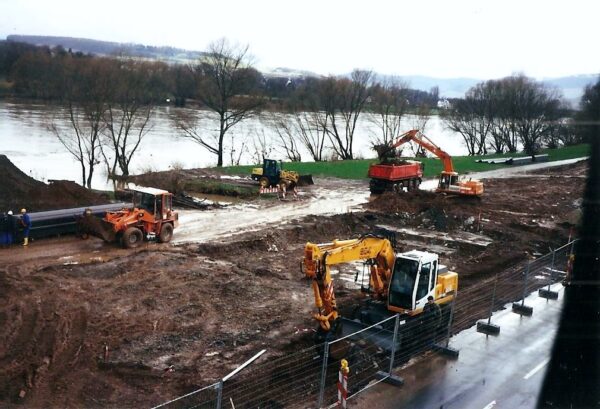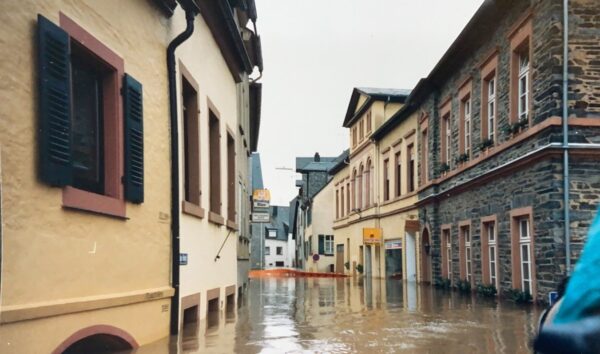Living with the flooding of the Moselle was a matter of course for the inhabitants of Lieser. The worst hit were the residents in the lower village, who were regularly hit by the water masses. However, the “flood of the century” in 1993 showed politicians and the responsible authorities that the construction of a protective dam would be essential for the substance and development of the community.
Up to that point, the residents had been relatively relaxed about the almost annually recurring situation. The flood of ’93, however, caused damage that threatened the existence of many areas.
130 affected buildings made it clear that a solution had to be found to protect the residents from this danger.
In order to achieve flood protection for the centre of the village, a protective structure with a height of up to 4.50 m had to be built over a length of one kilometre. In many respects, the best solution proved to be to use the route of the former railway embankment as a dike with a subsoil sealing. This was supplemented by mobile protective elements as well as a large central culvert in the area of the entrance to the village centre.
Work on this began in November 1998 with the removal of the old railway embankment and the preparation of the dyke route. In spring 1999, the sheet pile wall was driven and the dyke body was partially built up.
Already one year later, after the main structures were largely completed, the pumping station was equipped and the supply facilities installed. In July 2000, the mobile elements were delivered and erected in a trial run.
After a construction period of 22 months, the work was completed in the summer of 2000 according to plan. The total cost of the structure was about 20.5 million DM. It now provides protection even for events that statistically occur only every 35 years. The existing freeboard also spares the village from a flood like the one that occurred at Christmas 1993. At that time, the water level in Trier was 11.28 m.
The construction of the flood protection system was accompanied by road construction and village renewal measures. After the supplementary work on the canal network, the area of the market square could also be redesigned.
All the associated measures considerably increased the quality of life and living in the village and promoted the positive development of the wine and holiday resort.



